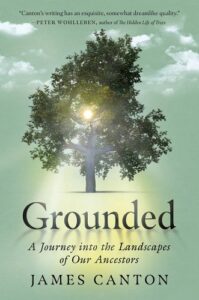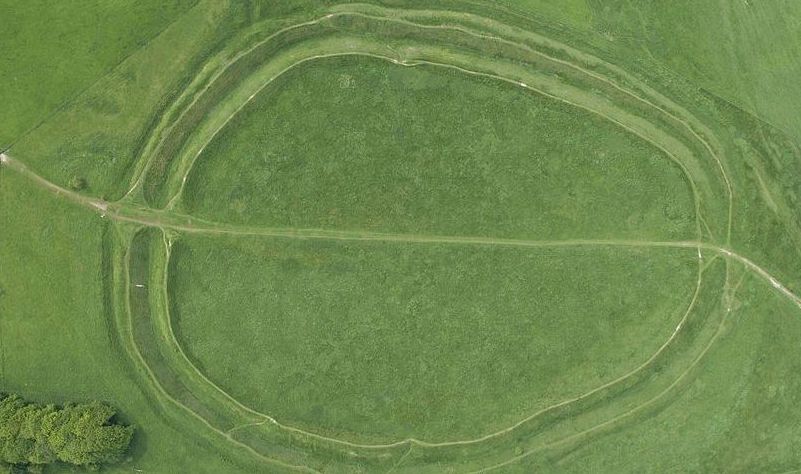Searching for Sacred Landscapes: On Finding the Sublime in Solitude
James Canton Explores the Unity of the Natural and the Human Throughout the Ages
I came to Walsingham to appreciate the nature of a living religious site, a shrine visited by thousands each year, specific sites that have been sacred for centuries and which are still considered so. I hoped that I might feel something of the same sense of calm and peace that I had found in the freezing airs of the chapel at Lindsey and the seclusion of Little Gidding.
Yet here at Walsingham there is one vital other ingredient: other people. Their presence and their profound, obvious faith have somewhat bewildered me. I am not a fellow believer and, as such, it feels uncomfortable to be intruding into these sacred spaces as others sit here beside me.
I have known this feeling before, such as when stepping into some of the finest mosques around the world—the grand glory of the Umayyad Mosque in Damascus, the intimate wonder of La Mezquita in Cordoba—or in the vaulted splendor of cathedrals such as St. Paul’s in London, the Sagrada Família in Barcelona, where the presence of so many others somehow diminishes the sense of the numinous. Unlike the pleasure to be had at opening the heavy door of an empty chapel or church, and, like Philip Larkin, going to “stand in silence,” when worshippers or tourists are in the building, that intangible enchantment is far harder to find.
I drive away from Walsingham with my mind spinning: a medieval apparition, a statue of the Virgin Mary created and then—500 years later—publicly burnt before being rebuilt another 400 years on.
There is something deeply liberating about being here, outside and in this strange light.Rain floods down from a sudden shower. Black clouds shut out the daylight. After a couple of miles, there is a road sign: Warham. I am without map but heading for Burnham Overy Staithe on the North Norfolk coast, where I will spend the night. Warham is on the way, I reckon, so I follow—down an ever-smaller country road—and emerge at a crossroads to the sight of the Three Horseshoes pub. Now I know where I am. I have been here before. A thought strikes me, a new plan of action. I head up the lane opposite, along the single track, over the bridge and come to a halt on a grassy patch of ground beneath two oak trees.
When I step from the car, the rain has stopped. Sunshine pours beneath the cloud. To the north, arching the lane behind me, is a rainbow. I stand and stare in awe. The bands of color are getting more intense each second. A second, brilliant arch starts to emerge. I can’t help myself.
“Wow,” I say, to no one, to the air about me.
Out in the open landscape, standing alone and staring at these incredible arcs of color is a sudden reminder how moments in the natural world can be as intense and pleasing as standing in a silent chapel at Lindsey, Little Gidding or Walsingham. The sky is lit up to the north. While there is certainly something powerful and pleasing in simply being in the silence of those places of worship, there is something deeply liberating about being here, outside and in this strange light, away from the enclosing walls of religious buildings—being thrust into the immediacy of the present once more by the spectacle of the sky above. Here, too, is something numinous.
I am somewhat stunned by the moment. When I do finally wander off down the track to the west, I glance back every few yards at the two bold arcs of color still framing the sky, smiling to myself like one possessed. I try to recall the words of that William Wordsworth poem.
“My heart leaps up when I do spy a rainbow in the sky,” I say out loud.
Then there’s that line about, “So did it as a boy… so does it as a man…” I know I am flapping about in the poem, but it is fun to do so as I stroll along this pathway, enjoying the freedom of the fresh air, the vaulted sky above.
“The child is father to the man,” I state to no one.
Indeed, there is a childlike wonder in me as I walk with that rainbow beaming down. Wordsworth knew that same joy. He also understood how there was a sublime sense to being in the natural world, to appreciating the numinous aspect of nature. I struggle to recall the final lines of the poem.
“And I wish I could spend all my time in natural piety.”
That’s not quite right, though that phrase “natural piety” is. A habitual reverence and devotion to nature. That seems a fine idea.
Atop a stile, I stop and smile.
Before me are the ancient earthworks: Warham Camp in all its glory. The best-preserved Iron Age fort in East Anglia, the information board notes. This was once home to the ancient folk of the Iceni who, under their leader Boudicca, rose up against the oppressive forces of the Romans, and in 61 CE burnt down the towns they had created at Colchester, London and St. Albans.
I feel liberated, too. It feels so good to step back onto these lands. I wind along a rabbit-forged pathway through the meadow grasses, plunging down the track and halting before the outer wall of the camp, where there is a strange humming sound. I look about me. It is a vast colony of ground-nesting bees busy collecting the last of the nectar from meadow flowers—the glorious blue heads of cornflowers and harebells.
Their presence covers some twenty, thirty meters of these warmer south-facing slopes of the fort. I have never seen such a sight. They are everywhere. Fleeing for the high ground, nipping up the chalk slopes to the lofty, highest heights of the fort, I look down to the wide, enclosed circular space within. There is one lone holm oak tree. The last time I was here, my son Joe was still a baby—I had placed him up in a nook in the tree, some six feet from the floor, his little body framed, held in the embrace of the oak.
I stroll on along the path picking at fragments of flint, pieces of chalk, musing on how it is such an amazing place, such a beautiful site. And how much more stunning would this place have looked in its heyday, the fresh, white chalky faces of the banks reflecting the sunlight, the sparkling waters of the river curling around the western edge of the site. This really is an extraordinary landscape.
It feels so good to be out here in the open, to stand alone on these ancient walls and feel the wind and the sunshine of autumn. From the top ramparts of Warham Camp, I scan across the surrounding fields. To the north, the grey stone tower of Warham Church rises beyond trees. To the south, somewhat further away, on slightly higher ground, stands the stone frame of another church. I wonder what ancient sacred sites lie beneath each one.
It is that uniting of the natural and the human that was vital to so many ancient places.I follow the track that runs along the heights of the earthworks, clockwise, always clockwise—never widdershins. The rain is gone. Sun and scudding clumps of clouds fill the sky. The moment seems to invite movement. I wander along entirely lost in the beauty of the surroundings. The hum of the bees fades. I slow and start to try to imagine this site 2,000 years before, the gathering of people here. What would they have placed in their shrines? I try to skip forward a thousand years or so and imagine Lady Richeldis after her vision in 1061, directing the building of the Holy House in her gardens.
I halt. The River Stiff key that I parked beside at the Slipper Chapel is here again beside me, a mere matter of some two miles further north, still winding its gentle way across the lands of North Norfolk towards the North Sea. Step back far enough and the features of the landscape become far more central to the nature of any human sites of significance. Here, at Warham Camp, the river forms a protective arm round a good third of the site.
Its presence was certainly a reason for the camp being constructed precisely where it was. To the Celtic people of the Iceni, the river not only supplied fresh drinking water and a defensive role, it provided the physical welding of the human-constructed elements of the site with the natural landscape. It is that uniting of the natural and the human that was vital to so many ancient places.
It is so visibly clear how the camp’s natural setting had been worked with in order to create the site. I wonder if there was an Iceni sacred space within its confines. Had there once been a shrine built somewhere within these chalk walls? It was certainly feasible. At the larger Iron Age earthwork camps, such as Maiden Castle in Dorset, there is evidence of shrines as the centre of activity. I walk on.
The ramparts dip on the south-western edge of the camp, where landscaping in the eighteenth century has shifted the path of the river, damaging the ancient earthwork in the process. I glance back to the sprawling glory of the holm oak and think of Baby Joe up in the hollow niche in the tree. That certainly feels like a hallowed site—a fine place to practice a devotion to nature; or “natural piety” as Wordsworth would have it.
__________________________________

Excerpted from Grounded: A Journey Into the Landscapes of Our Ancestors by James Canton. Copyright © 2023. Available from HarperOne, an imprint of HarperCollins Publishers.




















